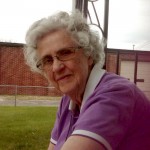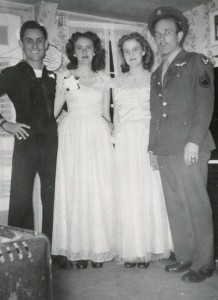Genealogy
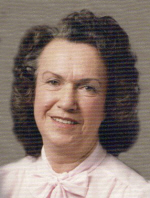 When you are a lot like another person, you carry memories of that person around with you. The strange thing about it is that you probably don’t even notice those similarities during that person’s lifetime. Often it is after their death, that suddenly things like their laugh coming out of you, has a tendency to startle you. Something, like being built like that person is always something you knew, and yet, things like looking like that person, may not be something you could see, until you looked at a picture of yourself, and you can totally see that person. I suppose that different hair styles and the use of make up can make a difference in each one’s looks, but eventually, something just stands out, and you know that you are that person’s mini me…even if that person is not your parent, but rather and aunt, as in my case. I never thought of myself as being anyone’s mini me, but in the case of my aunt and me, that is clearly the case.
When you are a lot like another person, you carry memories of that person around with you. The strange thing about it is that you probably don’t even notice those similarities during that person’s lifetime. Often it is after their death, that suddenly things like their laugh coming out of you, has a tendency to startle you. Something, like being built like that person is always something you knew, and yet, things like looking like that person, may not be something you could see, until you looked at a picture of yourself, and you can totally see that person. I suppose that different hair styles and the use of make up can make a difference in each one’s looks, but eventually, something just stands out, and you know that you are that person’s mini me…even if that person is not your parent, but rather and aunt, as in my case. I never thought of myself as being anyone’s mini me, but in the case of my aunt and me, that is clearly the case.
My Aunt Ruth is the aunt that I really look like, and laugh like, and yet it was after her passing that it suddenly dawned on me that I really do laugh like her. Aunt Ruth had a great sense of humor, and she loved to laugh. She was a woman who had been a lot of places, and that made her seem to me to be very sophisticated, but Aunt Ruth would never have considered herself to be some fancy woman of the world. She had just lived in several places, and that gave her some knowledge of how things 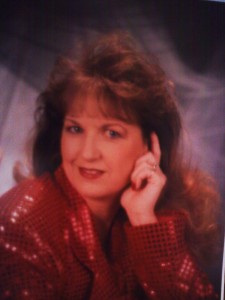 worked in some of the glamorous places that I had not been in or at least not very long, but she knew them well.
worked in some of the glamorous places that I had not been in or at least not very long, but she knew them well.
One of the memories I will always have of Aunt Ruth, is the moccasins she always wore. I don’t know if she loved the Native American culture or if the moccasins were just comfortable, but she loved them. She always wore the ones with the tiny bead work on them, and for some reason, my little girl mind always thought those were special. I’m sure that it was because my Aunt Ruth wore them. When you look up to someone, you really think that everything they do is the coolest thing in the world. Aunt Ruth left us in 1992, and we all miss her very much, but for me, there is the fact that in many way, I am so much like her, and it is like carrying her memory with me. Today would have been Aunt Ruth’s 90th birthday. Happy birthday in Heaven, Aunt Ruth. We love and miss you very much, and can’t wait to see you again.
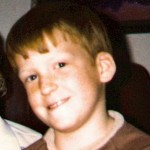 In the relatively short time that our family has really reconnected with our cousins on my dad’s side, I feel very blessed to have had the opportunity to get to know my cousin Shawn Fredrick. I have to say that his personality has been such a pleasant surprise. For some reason I always thought of Shawn as really shy and serious, but now I know that he has an amazing sense of humor, and a real talent for history, especially family history. I think that part is in his blood. His grandma, my Aunt Laura Spencer Fredrick, and his great uncle, my Uncle Bill Spencer, have been studying family history for a long time…as have his Uncle Dennis Fredrick, and his dad, Gene Fredrick, both of whom are my cousins, and of course, his older brother, Tim Fredrick. I’m sure that Shawn and Tim got into the history about the same time, with their dad’s interest in it, and he was helping Uncle Bill with copies, layouts, scanning, and researching. Nevertheless, once you start looking at family history, it is very easy to become additced to it…I should know.
In the relatively short time that our family has really reconnected with our cousins on my dad’s side, I feel very blessed to have had the opportunity to get to know my cousin Shawn Fredrick. I have to say that his personality has been such a pleasant surprise. For some reason I always thought of Shawn as really shy and serious, but now I know that he has an amazing sense of humor, and a real talent for history, especially family history. I think that part is in his blood. His grandma, my Aunt Laura Spencer Fredrick, and his great uncle, my Uncle Bill Spencer, have been studying family history for a long time…as have his Uncle Dennis Fredrick, and his dad, Gene Fredrick, both of whom are my cousins, and of course, his older brother, Tim Fredrick. I’m sure that Shawn and Tim got into the history about the same time, with their dad’s interest in it, and he was helping Uncle Bill with copies, layouts, scanning, and researching. Nevertheless, once you start looking at family history, it is very easy to become additced to it…I should know.
I find, the more I get to know Shawn, that we think a lot alike…especially politically, which I love, but for the sake of my friends who disagree with me politically, I won’t go into now. Nevertheless, I think Shawn and I have a similar sense of humor too, because we also seem to find the same things funny. Shawn likes trivia, which is, in my opinion, a lot of fun too. I love to see what might have happened on a certain day in history, or even just learn about unusual facts. I think Shawn is a lot like that too, because of the things he posts on Facebook. I really like the way Shawn explains the things he is telling you about. He is very thorough, and when he is done telling you the story, you really feel like you know what was going on. Not everyone has the ability to tell a story in a way that makes you feel like you are there too.
I think both Shawn and Tim are very intelligent men, and both are very excellent computer programmers, but they both also love woodworking, which is another thing that is in their genes, through their dad, Gene, grandfather Fritz Fredrick, and great grandfather, Allen Luther Spencer, and probably other people on the Fredrick side of the family too. Their dad made beautiful dressers, desks, and cabinets, and taught them how to 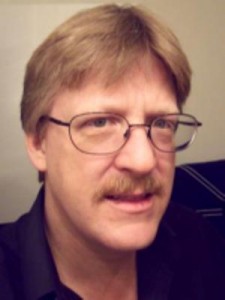 make them too. Still, I’m not sure that just anyone could learn that. I believe it takes a bit of inherited talent too. I am not sure that I could make anything that would look like it was anything much, and that is one area that Shawn and I differ greatly. Of course, not all of his projects are geared toward beauty, necessarily, some like the mirror that fell, are geared toward functionality, with a little humor mixed in, as you can see from Shawn’s comment about that project. “My mirror fell in the middle of the night and shattered so in the tradition of my father for sturdy building projects that never have to be fixed again, I just installed another one with drywall anchors rated at 60 pounds. Unless we have a 7.0 earthquake, it’s not coming down again in my lifetime” No, I’m sure it won’t Shawn. Like your brother said, “When Mt. Cheyenne suddenly and unexpectedly erupts and the pyroclastic flow brings down mirrors across the city, yours will be standing!” If you can pull that off, you are a great craftsman. Seriously though, Shawn is a very talented man, and I am proud to call him my cousin.
make them too. Still, I’m not sure that just anyone could learn that. I believe it takes a bit of inherited talent too. I am not sure that I could make anything that would look like it was anything much, and that is one area that Shawn and I differ greatly. Of course, not all of his projects are geared toward beauty, necessarily, some like the mirror that fell, are geared toward functionality, with a little humor mixed in, as you can see from Shawn’s comment about that project. “My mirror fell in the middle of the night and shattered so in the tradition of my father for sturdy building projects that never have to be fixed again, I just installed another one with drywall anchors rated at 60 pounds. Unless we have a 7.0 earthquake, it’s not coming down again in my lifetime” No, I’m sure it won’t Shawn. Like your brother said, “When Mt. Cheyenne suddenly and unexpectedly erupts and the pyroclastic flow brings down mirrors across the city, yours will be standing!” If you can pull that off, you are a great craftsman. Seriously though, Shawn is a very talented man, and I am proud to call him my cousin.
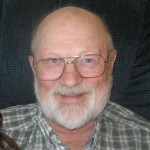
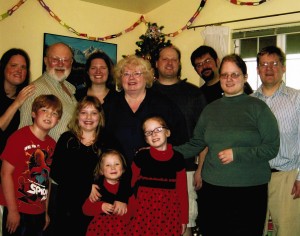 A few days ago, a man commented on one of my stories, saying that he was Mary LuLu Taylor Leary Begier Warren’s great grandson. Joe Brown comes from her marriage to James Begier, the man she married after James Leary passed away. LuLu and James had three children, Minnie, John, and Mable. Mabel Claire married Edward Anthony Brown, and they had three children, Charles, Frank, and Mary. Frank Brown married Mary Lou Conway, and Frank Joseph (Joe) Brown is their son. Joe is my husband Bob Schulenberg’s second cousin once removed. Finding a new cousin is always exciting for me, but with the discovery of Joe, comes so much more. Joe brings with him a Gold Mine…a true Gold Mine. Joe has sent me pictures of his family, and his own drawings too. In return I have sent him pictures of our family and my in-laws family, so we are working on getting acquainted.
A few days ago, a man commented on one of my stories, saying that he was Mary LuLu Taylor Leary Begier Warren’s great grandson. Joe Brown comes from her marriage to James Begier, the man she married after James Leary passed away. LuLu and James had three children, Minnie, John, and Mable. Mabel Claire married Edward Anthony Brown, and they had three children, Charles, Frank, and Mary. Frank Brown married Mary Lou Conway, and Frank Joseph (Joe) Brown is their son. Joe is my husband Bob Schulenberg’s second cousin once removed. Finding a new cousin is always exciting for me, but with the discovery of Joe, comes so much more. Joe brings with him a Gold Mine…a true Gold Mine. Joe has sent me pictures of his family, and his own drawings too. In return I have sent him pictures of our family and my in-laws family, so we are working on getting acquainted.
Joe has been researching his family tree too, so we have a lot to talk about and a lot to share. He has access to a bunch of pictures from a part of Bob’s family that I know…some well, some only from my own research and stories from Bob’s grandmother, Vina Leary Schulenberg Hein. Joe, however, has much information, and many 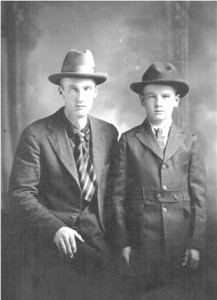
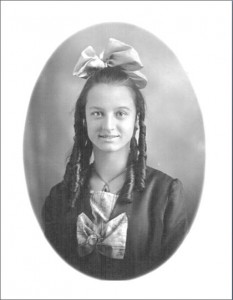 pictures…pictures of people I didn’t think I would ever have and pictures of people I know well, when they were just children. I am so overwhelmed by all this and his generosity, that it brings tears to my eyes. What a gift he has given me and the rest of the family too, as this story will serve to inform them of this amazing gift we have received. Overwhelming and amazing!! Receiving these pictures was like being given a part of our family back. I have often wondered what Bob’s grandma, Vina Leary Schulenberg Hein looked like when she was a girl. Now I know. She was a pretty girl with long ringlets. I have never seen a picture of her brother, and now I have several of them, including one with his wife, Rose Schulenberg Leary. And the only picture we had of Marion Chester Leary was the one I have used in stories in the past. My father-in-law only knew of that one. Now I have several of him too. And I have pictures of Chester’s half siblings Minnie Begier Morgan, John Begier, and Mable Claire Begier Brown. I have pictures of the history that has taken place in Forsyth, Montana, where much of Bob’s family history is centered. Of course I can’t include them all here, so they will be used in a future story. I simply could not feel more blessed.
pictures…pictures of people I didn’t think I would ever have and pictures of people I know well, when they were just children. I am so overwhelmed by all this and his generosity, that it brings tears to my eyes. What a gift he has given me and the rest of the family too, as this story will serve to inform them of this amazing gift we have received. Overwhelming and amazing!! Receiving these pictures was like being given a part of our family back. I have often wondered what Bob’s grandma, Vina Leary Schulenberg Hein looked like when she was a girl. Now I know. She was a pretty girl with long ringlets. I have never seen a picture of her brother, and now I have several of them, including one with his wife, Rose Schulenberg Leary. And the only picture we had of Marion Chester Leary was the one I have used in stories in the past. My father-in-law only knew of that one. Now I have several of him too. And I have pictures of Chester’s half siblings Minnie Begier Morgan, John Begier, and Mable Claire Begier Brown. I have pictures of the history that has taken place in Forsyth, Montana, where much of Bob’s family history is centered. Of course I can’t include them all here, so they will be used in a future story. I simply could not feel more blessed.
Joe has told me that he has much more information to share with me, and while I thought I didn’t have very much to share in return, I am finding that I have the continuing story on the Schulenberg side, at least, and he has the continuing family of his side. That is an amazing combination, and with the history that he knows, I 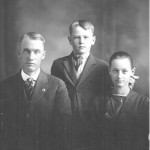
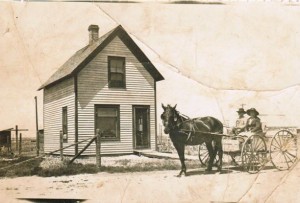 hope that I will be able to contribute some history too. Neither of us live in the area that we are talking about…Forsyth, Montana…and yet a lot of the family history took place there. What I do have is the stories told to me by my husband’s grandmother, our beloved Vina Leary Schulenberg Hein, and the stories told to me by my in-laws, Walt Schulenberg and Joann Knox Schulenberg. I am eager to share all of this history with Joe and his family, my family, and my readers. It’s going to be an incredible journey.
hope that I will be able to contribute some history too. Neither of us live in the area that we are talking about…Forsyth, Montana…and yet a lot of the family history took place there. What I do have is the stories told to me by my husband’s grandmother, our beloved Vina Leary Schulenberg Hein, and the stories told to me by my in-laws, Walt Schulenberg and Joann Knox Schulenberg. I am eager to share all of this history with Joe and his family, my family, and my readers. It’s going to be an incredible journey.
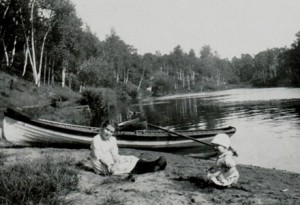 My Uncle Bill Spencer spent most of his life collecting information about the family history, in an effort, not only to know about his past and his heritage, but to pass it along to the rest of his family. His search began when he was eight and his mother told him about a black book that held the known family history at that time. For some people the information in the black book might have been enough information, but for Uncle Bill, it was just enough to whet his appetite for more. That was when the journey started. It was a journey that would continue for most of his life…until dementia would cause Uncle Bill to forget…or at least to forget that he was still searching.
My Uncle Bill Spencer spent most of his life collecting information about the family history, in an effort, not only to know about his past and his heritage, but to pass it along to the rest of his family. His search began when he was eight and his mother told him about a black book that held the known family history at that time. For some people the information in the black book might have been enough information, but for Uncle Bill, it was just enough to whet his appetite for more. That was when the journey started. It was a journey that would continue for most of his life…until dementia would cause Uncle Bill to forget…or at least to forget that he was still searching.
As I was looking at a picture in Uncle Bill’s family history books that I had seen many times before, and reading what he had written about it, just as I had before, one sentence caught my eye. The picture was of his older sister, my Aunt Laura Spencer Fredrick, and Uncle Bill taken in about 1924 at Billings Park at the west end of Superior, Wisconsin. Billings Park was a place that Uncle Bill really loved, and over the years, the park was not  kept up as well as it had been in the early years of his life. In Uncle Bill’s later years, he went to Billings Park on occasion. He speaks of trying to remember the park in the years when it was kept up better. He would think about the good times they had there, the happy memories, and the friends he knew then…so many now gone. All of the memories he talked about sounded so sweet, but it was his last sentence that really caught my eye, and even made me a bit sad. He said, “I can’t forget.”
kept up as well as it had been in the early years of his life. In Uncle Bill’s later years, he went to Billings Park on occasion. He speaks of trying to remember the park in the years when it was kept up better. He would think about the good times they had there, the happy memories, and the friends he knew then…so many now gone. All of the memories he talked about sounded so sweet, but it was his last sentence that really caught my eye, and even made me a bit sad. He said, “I can’t forget.”
At the time Uncle Bill placed the Billings Park pictures and wrote the narrative, he says the year was 2003. When my sisters and I visited him in October of 2005, his memory was slipping a bit. It wasn’t to the serious level that it is now, but having dealt with Alzheimer’s Disease with my mother-in-law, I know without doubt that he was at the point of wondering what was wrong with him…why he couldn’t remember the things that had been so important to him all his life. That simple statement, “I can’t forget” could mean that the memories flooded his mind, or it could have meant that he went there in an effort to hold on to the memories that seemed to be slipping away so quickly.
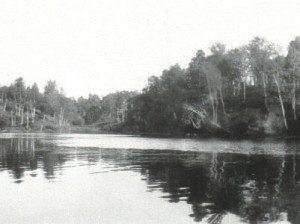 It saddens me to know that my Uncle Bill, who has spent his whole life researching, studying, and learning more and more about his heritage, and finding pictures, taking pictures, and placing pictures in his history books, is now struggling to hold on to the memories that his life and all his research has given him. I wish there was a way that we could help him to hold onto those memories. It also saddens me to know that he feels sadness when he remembers the friends and family members who have passed away. I think that probably the hardest part of a long life is the loss of so many people that you care about. It would be hard to be the last one left to pass along the memories, lest we…the future forget about the past.
It saddens me to know that my Uncle Bill, who has spent his whole life researching, studying, and learning more and more about his heritage, and finding pictures, taking pictures, and placing pictures in his history books, is now struggling to hold on to the memories that his life and all his research has given him. I wish there was a way that we could help him to hold onto those memories. It also saddens me to know that he feels sadness when he remembers the friends and family members who have passed away. I think that probably the hardest part of a long life is the loss of so many people that you care about. It would be hard to be the last one left to pass along the memories, lest we…the future forget about the past.
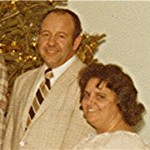
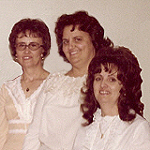 Over the years, my Aunt Dixie Richards has taken care of her grandchildren while her daughters and their husbands worked. Having done some babysitting for my kids, before and sometimes after school, I can attest to just how rewarding it is to play such an integral part in the upbringing of your grandchildren. It may not be that you are their disciplinarian or anything, but more than likely, their spoiler. Nevertheless, they will always know just how very much you love them. The relationship that develops from that time, that is so fleeting, will last a lifetime. I can’t think of another more amazing thing to do, aside maybe from raising your own children.
Over the years, my Aunt Dixie Richards has taken care of her grandchildren while her daughters and their husbands worked. Having done some babysitting for my kids, before and sometimes after school, I can attest to just how rewarding it is to play such an integral part in the upbringing of your grandchildren. It may not be that you are their disciplinarian or anything, but more than likely, their spoiler. Nevertheless, they will always know just how very much you love them. The relationship that develops from that time, that is so fleeting, will last a lifetime. I can’t think of another more amazing thing to do, aside maybe from raising your own children.
Aunt Dixie has the kind of heart that is perfect for caring for children. She has a gentle, loving spirit, and nurturing ways. It is easy to see that her grandchildren love her and their grandpa, my Uncle Jim dearly. They are very close to them, because they have spent time with them. That is a gift that not all grandchildren get to receive, and I find it very sad when they don’t, as do I’m sure, their grandparents, because grandparents know the value of being close to their grandchildren. Aunt Dixie has grandsons named Jacob Liegman, Gabe Williams, Gideon Williams, Noah Williams, and Jonah Williams (who lives in Heaven), but finally she was blessed with a granddaughter named Mayme Williams. Nevertheless, she loves each and every one of them.
Aunt Dixie was the eighth in a family in nine children, and because of the age difference between Aunt Dixie being born in 1943 and my Aunt Evelyn being born in 1928, the younger children were almost like a separate family. Add to that, the fact that the family had three daughters, a son, a daughter, a son, and three 
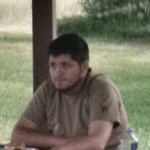 daughters, Aunt Dixie got to almost experience the middle child syndrome. I don’t think it was a negative thing back then, however. She was the middle of the younger three daughters. My mom, Collene Spencer was actually the middle child, being that girl between the two boys, but Aunt Dixie got to experience it a little bit too, as did Aunt Virginia, who was the middle of the older three daughters. It is an interesting position to be in, but not as interesting as being a grandmother, I’m sure. Today is Aunt Dixie’s birthday. Happy birthday Aunt Dixie!! Have a great day!! We love you!!
daughters, Aunt Dixie got to almost experience the middle child syndrome. I don’t think it was a negative thing back then, however. She was the middle of the younger three daughters. My mom, Collene Spencer was actually the middle child, being that girl between the two boys, but Aunt Dixie got to experience it a little bit too, as did Aunt Virginia, who was the middle of the older three daughters. It is an interesting position to be in, but not as interesting as being a grandmother, I’m sure. Today is Aunt Dixie’s birthday. Happy birthday Aunt Dixie!! Have a great day!! We love you!!
 Over the thousands of years since man has been on the Earth, amazing people, as well as evil people, have made memorable speeches. Some speeches were never expected to be memorable or historic, and others were expected to be so, because they were designed to be uplifting, inspirational, morale building, or a tribute filled with gratitude. It was the latter that inspired Sir Winston Spencer Churchill to make his speech on August 20, 1940. Europe was entrenched in World War II and things weren’t going as well as they had hoped. They had taken a few rather large beatings from the Germans, and morale was not as high as they had hoped. The speech was given as the United Kingdom prepared for the expected German invasion. After a series of defeats for the Allies over the prior months, Churchill was trying to tell the people that they were in a much better position now. He was correct, of course. Shortly after the speech, the British won the battle, the first significant defeat for the previously unstoppable Wehrmacht.
Over the thousands of years since man has been on the Earth, amazing people, as well as evil people, have made memorable speeches. Some speeches were never expected to be memorable or historic, and others were expected to be so, because they were designed to be uplifting, inspirational, morale building, or a tribute filled with gratitude. It was the latter that inspired Sir Winston Spencer Churchill to make his speech on August 20, 1940. Europe was entrenched in World War II and things weren’t going as well as they had hoped. They had taken a few rather large beatings from the Germans, and morale was not as high as they had hoped. The speech was given as the United Kingdom prepared for the expected German invasion. After a series of defeats for the Allies over the prior months, Churchill was trying to tell the people that they were in a much better position now. He was correct, of course. Shortly after the speech, the British won the battle, the first significant defeat for the previously unstoppable Wehrmacht.
Times of war are often when great men make speeches to inspire the military troops to persevere. They can be a battle cry of sorts. Or they can be a reflection of such deep gratitude that it leaves us awestruck. Churchill was first moved to utter those famous words upon his exit from the Battle of Britain Bunker at RAF Uxbridge on August 16, 1940. He had been the Number 11 Group RAF Operations Room during a day of battle. Afterwards, Churchill told Major General Hastings Ismay, “Don’t speak to me, I have never been so moved.” His emotions were so deep, that he had to think about this for a time. The two were silent for a few moments, and then Churchill said, “Never in the field of human conflict has so much been owed by so many to so few.” That declaration became the basis of his speech to the House of Commons on August 20, 1940.
In his speech, Winston Churchill said, “The gratitude of every home in our Island, in our Empire, and indeed throughout the world, except in the abodes of the guilty, goes out to the British airmen who, undaunted by odds, unwearied in their constant challenge and mortal danger, are turning the tide of the World War by their prowess and by their devotion. Never in the field of human conflict was so much owed by so many to so few. All hearts go out to the fighter pilots, whose brilliant actions we see with our own eyes day after day, but we must never forget that all the time, night after night, month after month, our bomber squadrons travel far into Germany, find their targets in the darkness by the highest navigational skill, aim their attacks, often under the heaviest fire, often with serious loss, with deliberate, careful discrimination, and inflict shattering 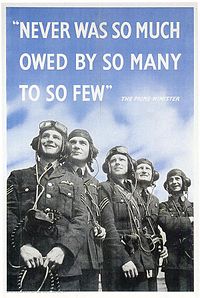 blows upon the whole of the technical and war-making structure of the Nazi power. On no part of the Royal Air Force does the weight of the war fall more heavily than on the daylight bombers who will play an invaluable part in the case of invasion and whose unflinching zeal it has been necessary in the meanwhile on numerous occasions to restrain…”
blows upon the whole of the technical and war-making structure of the Nazi power. On no part of the Royal Air Force does the weight of the war fall more heavily than on the daylight bombers who will play an invaluable part in the case of invasion and whose unflinching zeal it has been necessary in the meanwhile on numerous occasions to restrain…”
Words can be so powerful. They have the power to change the course of history when they are used to inspire soldiers in battle to a victory that seemed impossible just moments before the words were spoken. Sometimes, all it takes to bring about a victory is to listen to the one person who sees that victory, no matter how many defeats have preceded it, is still possible. Great men…men who have inspired victory…have been around a long time. These men, and women too, refuse to accept defeat. And they have the ability to speak powerfully to convince others that victory can follow defeat.
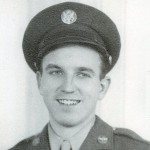 In 1990, when the remake of the movie, Memphis Belle came out, I watched it with intrigue, knowing that my Dad, Allen Spencer had been a top turret gunner and flight engineer on a B-17G Bomber in the 8th Air Force stationed in Great Ashfield, Suffolk, England. The Memphis Belle, a Boeing-built B-17F-10-BO, USAAC Serial No. 41-24485, was added to the USAAF inventory on July 15, 1942, and delivered in September 1942 to the 91st Bombardment Group at Dow Field, Bangor, Maine. She deployed to Prestwick, Scotland, on September 30, 1942, moving to a temporary base at RAF Kimbolton on October 1, 1942, and then finally to her permanent base at Bassingbourn, England, on October 14, 1942. Each side of the fuselage bore the unit identification markings of the 324th Bomb Squadron (Heavy). My dad was a part of the 385th Bomb Squadron (Heavy). Dad didn’t arrive in England until early April of 1944. His letter from April 14, 1944 tells his family that he had arrived and couldn’t tell them where he was for security reasons, except to say that he was somewhere in England.
In 1990, when the remake of the movie, Memphis Belle came out, I watched it with intrigue, knowing that my Dad, Allen Spencer had been a top turret gunner and flight engineer on a B-17G Bomber in the 8th Air Force stationed in Great Ashfield, Suffolk, England. The Memphis Belle, a Boeing-built B-17F-10-BO, USAAC Serial No. 41-24485, was added to the USAAF inventory on July 15, 1942, and delivered in September 1942 to the 91st Bombardment Group at Dow Field, Bangor, Maine. She deployed to Prestwick, Scotland, on September 30, 1942, moving to a temporary base at RAF Kimbolton on October 1, 1942, and then finally to her permanent base at Bassingbourn, England, on October 14, 1942. Each side of the fuselage bore the unit identification markings of the 324th Bomb Squadron (Heavy). My dad was a part of the 385th Bomb Squadron (Heavy). Dad didn’t arrive in England until early April of 1944. His letter from April 14, 1944 tells his family that he had arrived and couldn’t tell them where he was for security reasons, except to say that he was somewhere in England.
At the time I watched the remake of the original 1943 documentary film put out by the War Department, I assumed that while the movie said it was based on a true story, there was probably a lot of Hollywood hype to 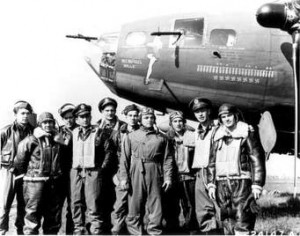 the movie. So, when I read my dad’s letter to his mother, my grandmother, Anna Schumacher Spencer, I was surprised that my dad mentioned it and said she should go see it. From my experience with the movie, I don’t think it would be a film I’d want to watch while my child was still on active duty and fighting from one of those planes. Both the original version and the remake were real enough to either show or tell of events involving the B-17 Bombers in combat situations, and the inevitable shooting down of the planes by the enemy.
the movie. So, when I read my dad’s letter to his mother, my grandmother, Anna Schumacher Spencer, I was surprised that my dad mentioned it and said she should go see it. From my experience with the movie, I don’t think it would be a film I’d want to watch while my child was still on active duty and fighting from one of those planes. Both the original version and the remake were real enough to either show or tell of events involving the B-17 Bombers in combat situations, and the inevitable shooting down of the planes by the enemy.
Of course, the point was to let people know that The Memphis Belle, a B-17 Bomber had become the first plane to accomplish 25 missions without being shot down. It was designed to be a celebration of that accomplishment. And so it was, but it also proved the stark reality that many other B-17 Bombers had been shot down, and in all reality would continue to be shot down. While the accomplishment of The Memphis Belle is nothing to take lightly, I think it would still be hard to think about all those men lost or imprisoned during that war…especially if I was the mother of an airman. In some ways, it surprised me that my dad would even ask his mom to so see the movie. He was always so protective of her. I suppose that in time, you get used to the events of war, especially when you are in the thick of it day after day, and maybe he thought it would give her hope too.

Nevertheless, it seemed rather strange to me that Dad had talked of this movie with his mother. I know that the Memphis Belle was a star, just because they had made it through without being shot down. They were the first, and to those at home trying to support the war effort, that was a moral booster. That made it important to do the movie and to have the Memphis Belle and her crew do tours back in the states. People needed to see the success of the air war. They needed hope that their loved ones would return. I suppose that was what my dad was thinking when he told his mother that she should go see the movie. I don’t know for sure if she did or didn’t, but in the end my dad came home, and that is all that mattered to my grandmother and to me.
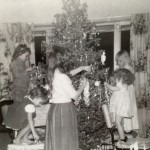
 I know that many people took their film to get it developed right after finishing the roll, and my parents intended to do that too, but like me, life sometimes got in the way for them, and some things didn’t get done. With five daughters, I can see how that happened. In fact, I only had two daughters, and I still have some film that has never been developed. It is a sad truth, that I hate to admit…but truth it is, nevertheless. My best laid plans, somehow always seemed to get mixed up. I was glad when they came out with the Polaroid camera, because it developed the film instantly. My pictures finally had a chance of being seen by my family. It was a great improvement for me and, I’m sure for many other people too.
I know that many people took their film to get it developed right after finishing the roll, and my parents intended to do that too, but like me, life sometimes got in the way for them, and some things didn’t get done. With five daughters, I can see how that happened. In fact, I only had two daughters, and I still have some film that has never been developed. It is a sad truth, that I hate to admit…but truth it is, nevertheless. My best laid plans, somehow always seemed to get mixed up. I was glad when they came out with the Polaroid camera, because it developed the film instantly. My pictures finally had a chance of being seen by my family. It was a great improvement for me and, I’m sure for many other people too.
Be that as it may, sometimes there are in this world, hidden treasures, that you come across when you least expect it. That is what has happened for my sisters and me. The hidden treasures I am talking about, are not in the form of silver or gold, but rather in pictures. As we have gone through our parents things following our mother’s passing, we have come across many pictures. We have reminisced, laughed, and yes, cried too, as we have looked at these great treasures from our past. It has been a healing time, but there was also a treasure that was so hidden, that it had never been seen by human eyes. We came across roll after roll of undeveloped film…some of it almost sixty years old. When we looked at the rolls of film, we really expected that there would be nothing we could do to save them, and there may indeed be some that are lost forever, but we have been amazed at how many are fine, and in reality they are of really good quality.
We have been having a wonderful time looking over just the few that our sister, Alena Stevens has forwarded to us, until we can get together to see them all. It is such a wonderful gift, to be given a part of our childhood that while we may remember it, we have never seen it in pictures. It’s a trip down Memory Lane, except that many of the “memories” are completely new to us…previously unseen memories. How rare it is to be given such a gift…such a treasure. I suppose that in retrospect, it might have been better to have developed 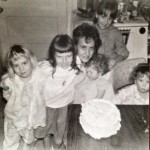
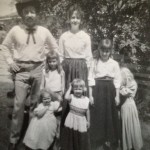 the pictures before, so our parents could have seen them too. Nevertheless, that did not happen, and in this way, it is like a special little present that our parents left us. It is like a secret plan that they had, to leave us something that they knew would make us happy after they were gone, and believe me, we know just how amazing and special it is. And the really good news is that there are more pictures to come. I just hope that the rest of them turn out just as good as these did, so that we will have lots more hidden treasures left to us by our parents in the future. The gift that keeps on giving…forever.
the pictures before, so our parents could have seen them too. Nevertheless, that did not happen, and in this way, it is like a special little present that our parents left us. It is like a secret plan that they had, to leave us something that they knew would make us happy after they were gone, and believe me, we know just how amazing and special it is. And the really good news is that there are more pictures to come. I just hope that the rest of them turn out just as good as these did, so that we will have lots more hidden treasures left to us by our parents in the future. The gift that keeps on giving…forever.
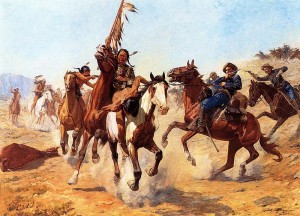 I don’t always think of myself as living in a historic area, although I should, because during the days of the Old West, at least, much history happened here. In fact, on this day, July 28, 1865, twenty year old Caspar Collins…a gutsy lieutenant from Dogwood Knob and Hillsboro, Ohio led 20 men to fight a battle against 1,000 to 3,000 Indians, just outside Platte Bridge Station, which was near Casper, Wyoming, where I live. The battle had been coming, and everyone knew it. The Lakota Sioux and the Cheyenne Indians had been attacking the United States Army for a couple of months now. The Indians had raided outposts and stagecoach stations over a wide area of Wyoming. On this day back in 1865, the Indians assembled their warriors and descended on Platte Bridge Station. The Platte River bridge was guarded by 120 men near the bridge, and another 28 soldiers guarded a wagon train a few miles away. The Indians killed 29 soldiers, while only losing 8 warriors in the raid.
I don’t always think of myself as living in a historic area, although I should, because during the days of the Old West, at least, much history happened here. In fact, on this day, July 28, 1865, twenty year old Caspar Collins…a gutsy lieutenant from Dogwood Knob and Hillsboro, Ohio led 20 men to fight a battle against 1,000 to 3,000 Indians, just outside Platte Bridge Station, which was near Casper, Wyoming, where I live. The battle had been coming, and everyone knew it. The Lakota Sioux and the Cheyenne Indians had been attacking the United States Army for a couple of months now. The Indians had raided outposts and stagecoach stations over a wide area of Wyoming. On this day back in 1865, the Indians assembled their warriors and descended on Platte Bridge Station. The Platte River bridge was guarded by 120 men near the bridge, and another 28 soldiers guarded a wagon train a few miles away. The Indians killed 29 soldiers, while only losing 8 warriors in the raid.
In reality, the Army was unprepared for this attack or the ones leading up to it. Colonel Thomas Moonlight had led a 500 Cavalry force out to seek out and punish the raiding Indians on May 26, 1865. He hung to minor Oglala leaders…Two Face and Black Foot. He left them hanging for days. I’m sure this infuriated the Indians. On June 3, the army began to worry that the 1,500 Lakota, mostly Brulé, and Arapaho who were living near Fort Laramie, might become hostile. So they decided to move them about 300 miles east to Fort Kearny in Nebraska. The Indians protested that Fort Kearny was in the territory of their traditional enemies, the Pawnee. The next day, near present day Morrill, Nebraska, most of the Indians refused to accompany the soldiers and 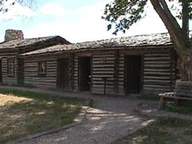 began crossing the North Platte River, assisted by Crazy Horse and a band of Oglalas on the other side. Attempting to stop them, Captain William D. Fouts and four soldiers were killed. Informed of the disaster, Moonlight departed Fort Laramie with 234 cavalry to pursue the Indians. He traveled so fast that many of his men had to turn back because their horses were spent. On June 17, near present day Harrison, Nebraska, the Lakota raided his horse herd and relieved him of most of his remaining horses. Moonlight and his men had to walk 60 miles back to Fort Laramie. He was severely criticized by his soldiers for being drunk and not setting a guard on his horses. On July 7, Moonlight was relieved of his command and mustered out of the army.
began crossing the North Platte River, assisted by Crazy Horse and a band of Oglalas on the other side. Attempting to stop them, Captain William D. Fouts and four soldiers were killed. Informed of the disaster, Moonlight departed Fort Laramie with 234 cavalry to pursue the Indians. He traveled so fast that many of his men had to turn back because their horses were spent. On June 17, near present day Harrison, Nebraska, the Lakota raided his horse herd and relieved him of most of his remaining horses. Moonlight and his men had to walk 60 miles back to Fort Laramie. He was severely criticized by his soldiers for being drunk and not setting a guard on his horses. On July 7, Moonlight was relieved of his command and mustered out of the army.
The Platte River bridge was a key crossing point of the North Platte River for wagon trains of emigrants traveling the Oregon and Bozeman Trails. The Indians wanted to stop traffic on the Bozeman Trail which led through the heart of their hunting territory. The bridge had been constructed in 1859 and was almost 1,000 feet long and 17 feet wide. On July 20, Indian leaders made their final decision to launch an attack against the bridge. The warriors gathered and set out southward from the mouth of Crazy Woman Creek on the Powder River. The Platte River Bridge was 115 miles south. The army was the largest they had ever seen. It was estimated to number 3,000 men. U.S. army accounts state that the wagons were forced into a hollow where they held out for four hours, using fire from Spencer rifles to repel assaults until a large group closed on foot and overwhelmed the defenders, killing all.
Then came the attack of Platte Bridge Station. The battle that left 29 men dead…including Lieutenant Caspar 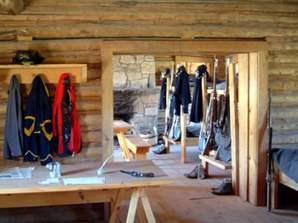 Collins, and at least 10 more men seriously injured. The battles before had involved maybe 1000 Indians. This battle was different…this one involved 3000. They were seriously outnumbered, but Lieutenant Caspar Collins went out to fight anyway. The day after the battle, the Indian army broke up into small groups and dispersed. A few remained near the Oregon Trail for raiding but most returned to their villages in the Powder River country for their summer buffalo hunt. Indians lacked the resources to keep an army in the field for an extended period of time. The Army officially renamed Platte Bridge Station to Fort Caspar to honor Collins, using his given name to differentiate the post from an existing fort in Colorado named after Collins’ father.
Collins, and at least 10 more men seriously injured. The battles before had involved maybe 1000 Indians. This battle was different…this one involved 3000. They were seriously outnumbered, but Lieutenant Caspar Collins went out to fight anyway. The day after the battle, the Indian army broke up into small groups and dispersed. A few remained near the Oregon Trail for raiding but most returned to their villages in the Powder River country for their summer buffalo hunt. Indians lacked the resources to keep an army in the field for an extended period of time. The Army officially renamed Platte Bridge Station to Fort Caspar to honor Collins, using his given name to differentiate the post from an existing fort in Colorado named after Collins’ father.
